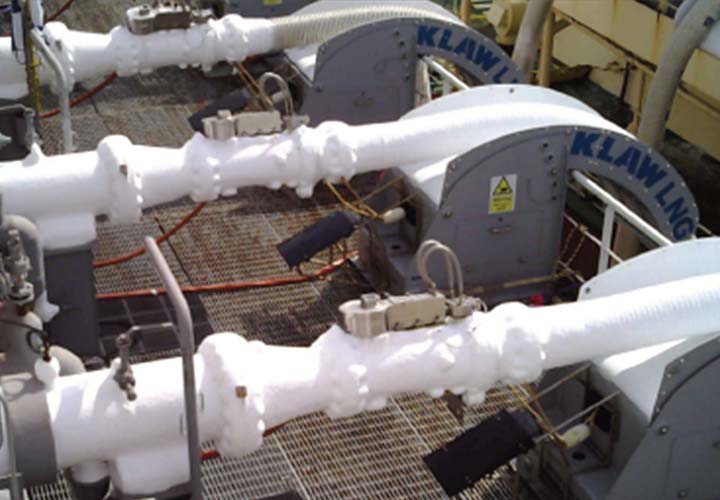
- Instant or controlled closure
- Compact and lightweight
- Efficient flow transfer
- Cryogenic and ambient temperature cycles

KLAW LNG Emergency Release Couplings offer safe and identified parting points within the LNG hose transfer system.
The ERC is integrated within the line and is the safety link between the transfer hose and the on-ship transfer system. The ERC is designed to close and separate and make safe the LNG flow when an event occurs.
The ERC operates at cryogenic temperatures.
Shuts off transfer flow in an emergency
When activated in an emergency, the ERC separates and the valves close. The double valve closure shuts the downstream and upstream LNG flow on each side of the separation.
Instant closure
The instant closure of the KLAW Flip-Flap valve mechanism within the ERC delivers the crucial advantage of minimal spill.
Controlled closure
The KLAW ERC range offers controlled closure options. This delivers additional control over shutdown of flow.
Compact and lightweight
Compared to other options, the KLAW ERC is compact and lightweight: a valuable feature in the challenging conditions of offshore environments.
Installation, maintenance and handling of the ERC on activation and reinstatement along with operation and management in confined spaces is much easier.
The KLAW STS LNG transfer system is a mobile system that can be transferred from and to any vessel if required.

Efficient flow transfer
The KLAW Flip-Flap valve design provides minimal flow restriction and therefore low pressure drop.
KLAW ERC sizes
KLAW LNG offers ERC systems in all sizes up to 10” NB. Larger sizes can be provided on application.
Cryogenic and ambient temperature cycles
The KLAW LNG ERC is designed to meet the demands of cryogenic to ambient temperature cycles.
The operating temperature of the LNG transfer system is cryogenic. When not commissioned, the system returns to an ambient temperature which can vary depending on the environment in which the system is operating.
KLAW LNG transfer systems are designed to sustain these repeated extreme temperature cycles.
Contact Us
How can we help?


